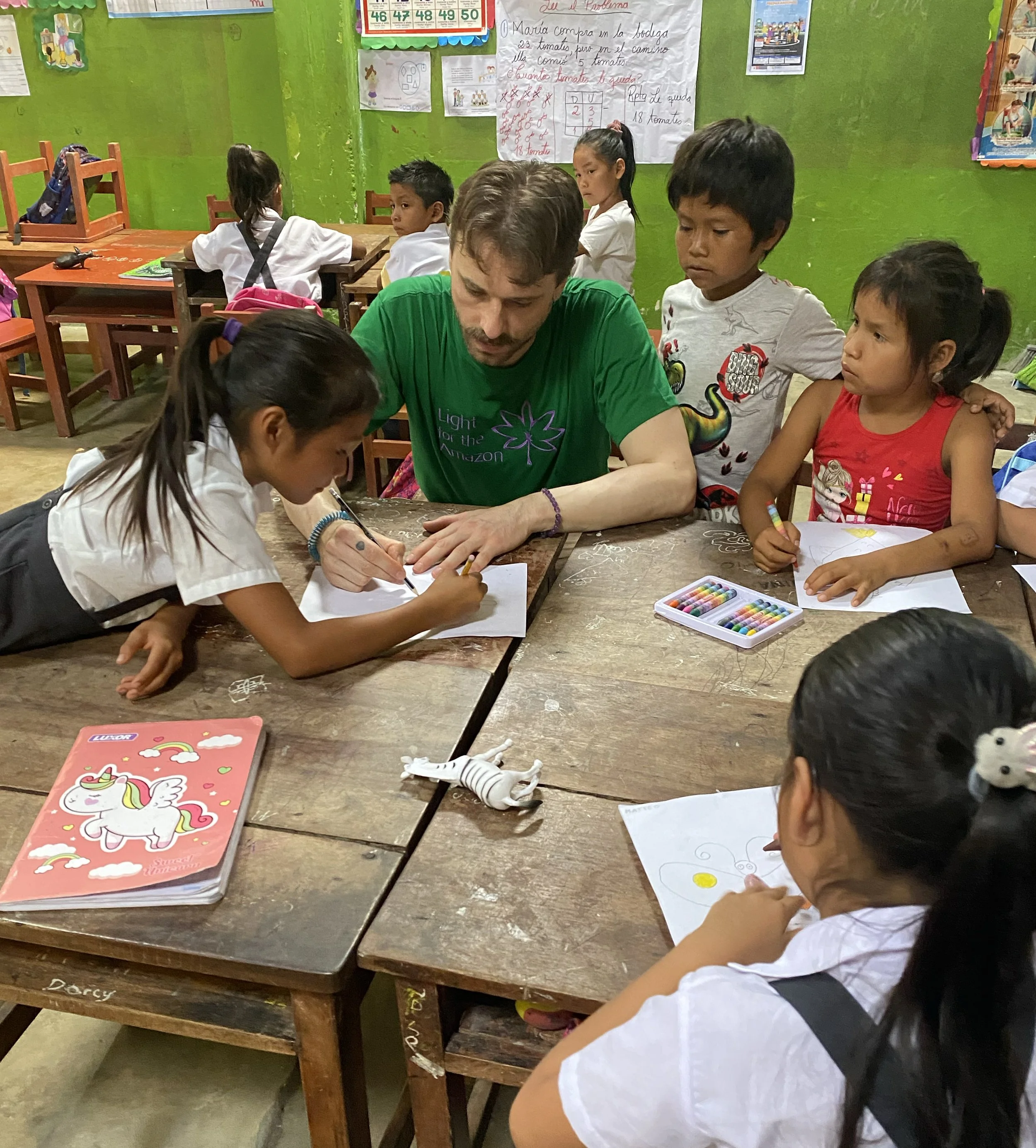EDUCATION PROGRAM FOR SUSTAINABLE DEVELOPMENT
The Amazonian Rainforest is the world's largest tropical rainforest with incredible biodiversity. However, with the high rate of deforestation, we are witnessing the failure of traditional approaches to the conservation of the rainforest, which are based on closing off forests as untouchable parks and reserves; this stems from the inability to foster the active involvement of the local communities. The current efforts to maintain and protect the rainforest achieve nothing, unless they generate economic and social incentives for the impoverished rural populations.
Light For The Amazon's mission is to protect and to sustain the Amazonian rainforest through creating the tools and infrastructure for these communities to generate tangible economic benefits and reinforcing a symbiotic relationship with the rainforest. We believe that this can be accomplished by focusing on the forest’s medicinal potential: The Amazonian Forest has more than 80,000 plant species and only 5% has been studied for medicinal purposes; yet this very small percentage provides a quarter of all the active principles for the drugs employed by western medicine. In the local communities, fewer and fewer individuals still hold this precious wealth of knowledge about the healing effects of the plants, and this tradition is rapidly disappearing due to social and economic factors.
We are working with the local community of Santa Maria De Ojeal in Loreto, Perú to create an educational program to harvest and transmit the knowledge of traditional plant medicine; paired with teaching how to sustainably use natural resources and how to best utilize lands already cleared to maximize the support for productive activities without generating further deforestation. We firmly believe that education is the catalyst for a local sustainable economy based on medicinal plants, healing and eco-tourism, thus helping to improve the well-being of people living in and around the rainforest. With Light for the Amazon, we aim to create a model that is replicable, sustainable and adaptable; so it could be spread throughout a large area of the tropical rainforest.

